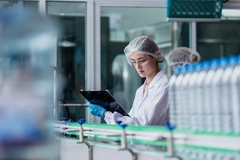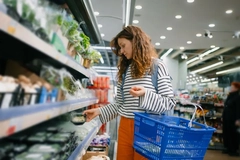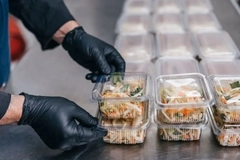Oceana report exposes increase in Amazon’s US plastic packaging waste, sparking company backlash
09 Apr 2024 --- Ocean conservation advocacy organization Oceana estimates that e-commerce giant Amazon generated 208 million pounds of plastic packaging waste in 2022 — a 9.6% increase over Oceana’s estimate for 2021.
The calculations were based on available market data, with adjustments made in light of Amazon’s recent public disclosures regarding changes in its plastic packaging practices. Oceana reports that with nearly 70% of Amazon’s net sales tied to the US, “it’s time for Amazon to do more by focusing on its largest and home market.”
Oceana’s senior vice president for Strategic Initiatives, Matt Littlejohn, tells Packaging Insights: “It is simple — the type of plastic used to package your e-commerce delivery is devastating the world’s oceans. Studies have found the kind of plastic often used by Amazon for packaging — plastic film — to be the most common form of marine plastic litter in nearshore ocean areas and the deadliest type of plastic to large marine animals.”
“Amazon reducing its plastic packaging will have a huge impact because of its dominant role in e-commerce. More and more, we are all buying things online, and Amazon can — by leading the way — ensure our packages are delivered with less plastic. This is good for the oceans and the planet.”
Meanwhile, responding to Oceana’s “Amazon’s United States of Plastic” report, Pat Lindner, Amazon’s vice president of Mechatronics and Sustainable Packaging, tells us: “We’re disappointed that Oceana continues to release a misleading report with exaggerated and inaccurate information about our plastic packaging.”
Calls for home country waste reduction
Oceana projects that up to 22 million pounds of Amazon’s global plastic packaging waste from 2022 will end up in the world’s waterways and seas, based on data from a peer-reviewed study published in Science in 2020.
 Amazon says in 2022, the reatilaer used 85,916 metric tons of single-use plastic across its global operations network to ship orders to customers — an 11.6% overall yearly decrease.“Amazon’s failure to reduce plastic in the US is troubling. The company has dramatically reduced plastic packaging in other major markets, including India and Europe. Why are US customers being left behind?” remarks Littlejohn.
Amazon says in 2022, the reatilaer used 85,916 metric tons of single-use plastic across its global operations network to ship orders to customers — an 11.6% overall yearly decrease.“Amazon’s failure to reduce plastic in the US is troubling. The company has dramatically reduced plastic packaging in other major markets, including India and Europe. Why are US customers being left behind?” remarks Littlejohn.
“According to research by YouGov, 85% of Amazon customers in the US reported being concerned about plastic pollution. It’s time for Amazon to step up and commit to a global plastic packaging reduction everywhere it operates — including in the US.”
Oceana shares that the e-commerce industry produced 3.8 billion pounds of plastic packaging waste in 2022, of which protective packaging (including bubble wrap and air pillows) made up 35.4% of the weight. Plastic pouches and bags (including Amazon mailers, envelopes and bubble-lined bags) reportedly comprised more than 1.2 billion pounds of total plastic packaging weight. Shrink films made up 11.9%, and 21% of the total weight were a mix of other plastic products like foams or gel packs.
In response to the findings, Oceana urges Amazon to take decisive action by phasing out plastic packaging in its largest market, the US. The organization is calling for a company-wide commitment to reduce the total amount of plastic packaging used by at least one-third by the year 2030, aligning with broader efforts to combat plastic pollution on a global scale.
“As one of the biggest retailers on the planet, Amazon is increasingly defining how our goods are packaged. The company can solve its plastic problem on a global basis now and into the future if it commits to do so — and follows through,” Littlejohn adds.
Reduction and elimination efforts
Highlighting the ways in which the e-commerce giant is reducing its packaging waste, Lindner says: “Amazon is committed to reducing or eliminating packaging altogether, including the use of single-use plastic, and we’ve shown this by sharing consistent and transparent updates on our progress.”  Oceana projects that up to 22 million pounds of Amazon’s global plastic packaging waste from 2022 will end up in the world’s waterways and seas.
Oceana projects that up to 22 million pounds of Amazon’s global plastic packaging waste from 2022 will end up in the world’s waterways and seas.
“In 2022, we used 85,916 metric tons of single-use plastic across our global operations network to ship orders to customers — an 11.6% overall yearly decrease, continuing to avoid tens of thousands of metric tons of new plastic each year in North America alone.”
“We’ve also started a multi-year effort to eliminate plastic delivery packaging from our US automated fulfillment centers, with the first already in operation and delivering to customers without plastic packaging. We’ll continue to invest, invent and scale our packaging reduction work for the good of customers and the planet,” Lindner tells Packaging Insights.
In February this year, Amazon expanded its Ships in Product Packaging (SIPP) program to all its “Fulfillment by Amazon” sellers across the US and Canada. The e-commerce giant says that since 2015, packaging programs like SIPP have reduced the average packaging per shipment by 41% and eliminated the need for over 2 million tons of packaging material. Furthermore, in 2022, 11% of packages worldwide were shipped without Amazon packaging.
Additionally, in October last year, the retailer converted automated machinery at its Ohio, US facility to create 100% paper-based e-commerce packaging, improving made-to-fit technology and transitioning from plastic air pillows to paper fillers.
Amazon also launched “The Sustainability Solutions Hub,” a resource designed to help producers improve the environmental footprint of their products and packaging, available to all sellers in France, Germany, Italy, Spain, the UK and US by the end of October 2023.
By Radhika Sikaria












